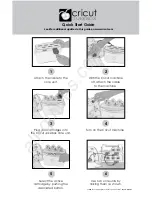
Operation manual for Ares(Tubular gel) series
- 20 -
voltage
is
lower,
the
battery
can’t
be
kept
in
fully
charged
state,
this
will
cause
sulfation
,
decrease
the
capacity,
and
also
shorten
the
life
of
the
battery
.
The
float
voltage
is
2.23V/cell
to
2.25V/cell
and
temperature
compensation
coefficient
is
‐
3mV/
℃
per
cell.
The
battery
need
an
equalization
charge
regularly.
The
equalization
voltage
is
2.35V
at
25
℃
.
Meanwhile,
the
equalization
voltage
should
adjust
with
the
ambient
temperature.
The
temperature
compensation
coefficient
is
‐
5mV/
℃
per
cell.
Table
3
‐
3
Relationship
of
ambient
temperature
and
voltage
Ambient
Temperature
(
℃
)
Float
voltage
(
V/cell
)
Equalization
voltage
(
V/cell
)
5
2.29
2.45
10
2.27
2.43
15
2.26
2.40
20
2.24
2.38
25
2.23
2.35
30
2.22
2.33
35
2.20
2.30
40
2.19
2.28
Fig.
Float
charge
and
equalization
charge
voltage
curve
3.3
Ambient
Temperature
Vs.
Battery
Life
Temperature
increase
will
harm
battery
and
decrease
battery
life.
When
temperature
exceeds
25
℃
,
the
battery
life
will
decrease
half
per
10
℃
temperature
raise.
For
example,
the
designed
life
of
battery
at
25
℃
is
18
years,
when
battery
operates
at
35
℃
for
a
long
period;
the
actual
life
may
fall
to
9
years.
L
25
=
L
T
×2
(
T
-
25
)
/10
Notes
:
T
the
actual
ambient
temperature;
L
T
is
designed
life
at
T
ambient
temperature
L
25
is
designed
life
at
25
℃
ambient
temperature
With
the
increase
of
ambient
temperature,
the
corrosion
of
battery
grid
and
water
loss
is
increase
which
leads
to
battery
life
reduction.
It
is
very
important
to
control
ambient
temperature.
Equalization voltage
Float voltage







































